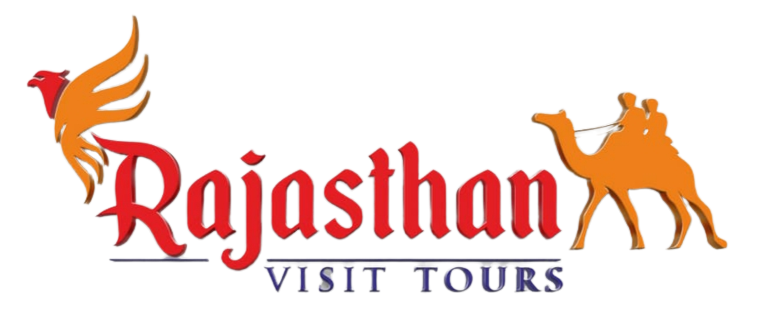Bikaner Travel Guide
BRIEF
This regal walled city, a stronghold of culture and magnificence, has a timeless attraction. Bikaner is a desert oasis with several sand dunes. The Junagarh Fort, one of Rajasthan’s most beautiful, is built on a rocky outcrop amid a bleak terrain. The mediaeval magnificence that infuses the city’s lifestyle is also preserved in the ancient walled city.
The city, also known as Camel Country, is known for having the greatest riding camels in the world, which are an integral part of life here. The majestic forts and palaces, carved with delicacy in reddish-pink sandstone, bore witness to the region’s rich historical and architectural heritage. Bikaner is a remarkable experience because of its undulating bazaars and bright, cheery people.
HISTORY
Bikaner’s history begins in 1488 AD, when a Rathore Prince named Rao Bikaji, a descendent of Jodhpur’s founder (Rao Jodhaji), founded his kingdom here. Rao Jodhaji had five sons, the most ambitious of them was Rao Bikaji. Bikaji picked a bleak wasteland he named Jangladesh and converted it into a magnificent city he named Bikaner after the founder.
CULTURE
Bikaner is surrounded by a seven-kilometer-long embattle wall with five gates, which sits on slightly higher ground. The majestic forts and palaces, carved with delicacy in reddish-pink sandstone, bore witness to the region’s rich historical and architectural heritage. Bikaner is a unique experience with its undulating pathways, vibrant bazaars, and bright and happy people.
FOOD
Who hasn’t heard of the Bikaneri Bhujia? The city’s specialty is a buffet of snacks and tiny meals, in addition to the traditional spicy Rajasthani food.
SHOPPING
The well-known bandhni sarees may be seen in abundance here. Cushion coverings with traditional mirror work, jooties, and low pidhis are worthy investments. Typical souvenirs include puppets, camel leather products, and handloom shawls.
ENTERTAINMENT
Bikaner Camel Festival (January): A magical desert city where music and dancing come to life. It is quickly gaining popularity since visitors may experience some uncommon folk performances, camel races, and camel dances here.
City Info
LOCATION
The Desert triangle is made up of three cities: Jaisalmer, Jodhpur, and Udaipur. Is located 354 kilometres from Jaipur, 312 kilometres from Jaisalmer, and 256 kilometres from Jodhpur in western Rajasthan. Bikaner is 480 kilometres from Delhi.
How to Reach
By Air
There is no official airport. However, the Indian Air Force airstrip is available to civilians for flights to and from Bikaner from November to March. Bikaner’s airport, Nal, is 10 kilometres away.
Jodhpur and Jaipur are the closest major functioning airports.
Bikaner has rail connections to Churu, Jaipur, and Delhi. A complete list is available at the Tourist Reception Centre. Call the Railways Inquiry Line if you have any questions (Tel: 131). The railway station is located in the heart of the city.
By Car
Many cities are well linked by bus. The Lalgarh Palace is just across the street from the Bus Stand.
CLIMATE
Hot days and chilly nights characterise this extreme and typical desert variety. In the summer, the highest and lowest temperatures are 41.8°C and 28°C, respectively. The highest and lowest temperatures in the winter are 23.2°C and 5°C, respectively.
Sightseeing by BIKANER
Junagarh
The fort, which was built in 1593 AD by Raja Rai Singh, a commander in Emperor Akbar’s army, is a powerful fortification surrounded by a moat and has several lovely residences. The courtyards, balconies, kiosks, and windows strewn throughout these red sandstone and marble mansions create a stunning ensemble.
Palace of Lal Garh
In honour of his father, Maharaja Lal Singh, Maharaja Ganga Singh created the palace, which is a red sandstone architectural marvel. Beautiful latticework and filigree work adorn the castle. The sprawling grounds with flowering bougainvillaea and dancing peacocks have been transformed into a luxury hotel and the Shri Sadul museum. The museum, which takes up the whole first floor of the palace, has well-preserved vintage pictures and animal specimens.
Devi Kund is a Hindu goddess who lives in India.
Built in commemoration of the Bika dynasty monarchs, a royal crematorium with multiple ornate cenotaphs called chhatris. The most remarkable of them is Maharaja Suraj Singh’s chhatri, which is completely made of white marble and has beautiful Rajput murals on the ceiling.
Deshnoks Karni Mata Temple is a Hindu temple dedicated to the goddess Karni Mat
The famed 600-year-old temple dedicated to Karni Mata, a manifestation of Goddess Durga, is located on the Jodhpur road. Maharaja Ganga Singh gave the temple’s massive, beautifully wrought silver gates. The rats that roam freely inside the temple’s sanctum sanctorum are the most fascinating aspect of the shrine. Due to the notion that they would be resurrected as holy men, they are revered and nourished by priests and worshippers.
Gajner Wildlife Sanctuary is a wildlife sanctuary in Gajner, California.
Nilgai, chinkara, black deer, wild boar, and flocks of imperial sand grouse thrive in the rich greenery of the Jaisalmer road’s woodlands. On the edge of the lake, the Gajner castle, a summer residence for the monarchs, has been turned into a hotel.
Other
JAIN TEMPLE OF HANDASAR
A stunning 16th century AD Jain temple dedicated to Parshavanathji, the 23rd Tirthankara. GANGA GOLDEN JUBILEE MUSEUM – It is the finest Rajasthan museum, with one of the most extensive collections of terracotta pottery, weaponry, Bikaner school miniature paintings, and coins. KILIBANGAN – Archaeologists are enthralled by the enormous remains of pre-Harappan and Harappan civilizations discovered at this location in the Hanumangarh district. SHIV BARI TEMPLE – Doongar Singhji built this temple in the late 1800s. The temple is surrounded by an embattlement wall. There are exquisite artwork on the walls, as well as a bronze Nandi facing the Shiva Lingam. THE SURAJ POLOR OR SUN GATE – This is the fort’s primary entrance. The extraordinarily magnificent Chandra Mahal or Moon Palace, with amazing murals, mirrors, and carved marble panels, and the Phool Mahal or Flower Palace, adorned with glass and mirrors, are two of the most noteworthy of these palaces.
